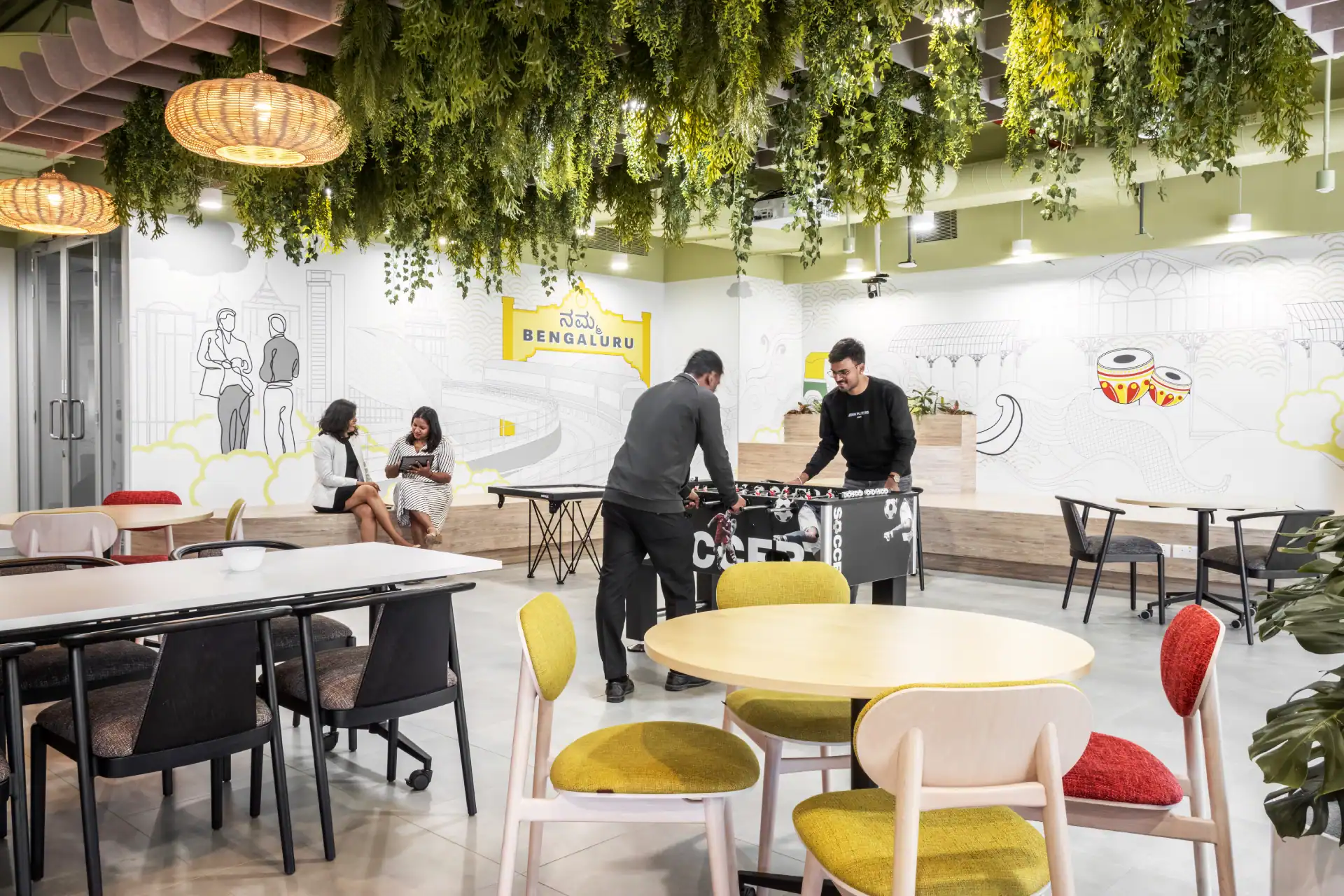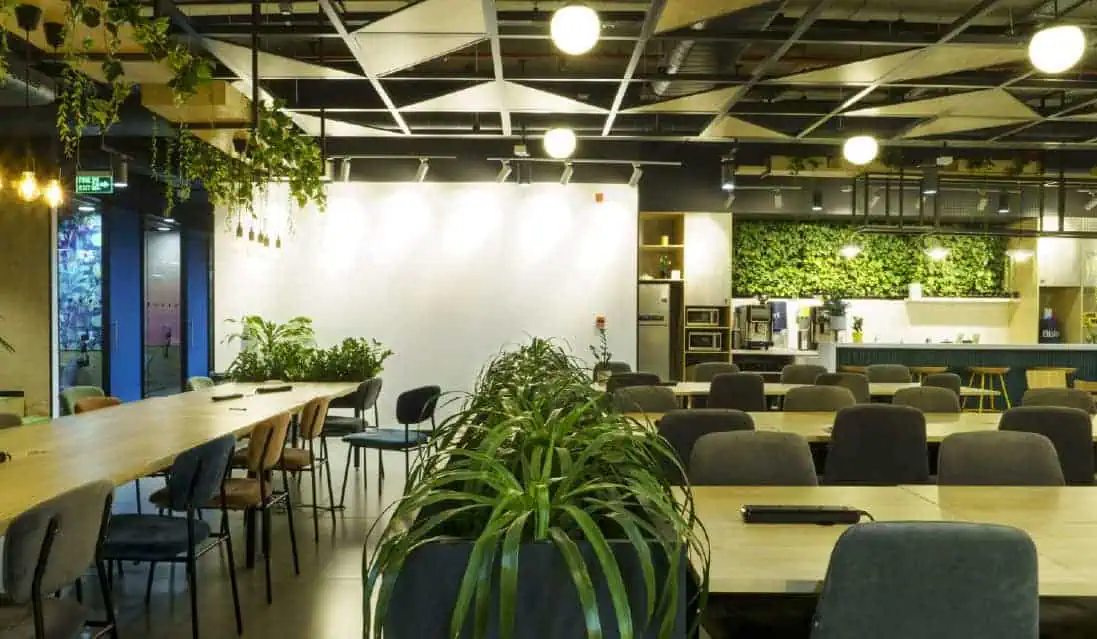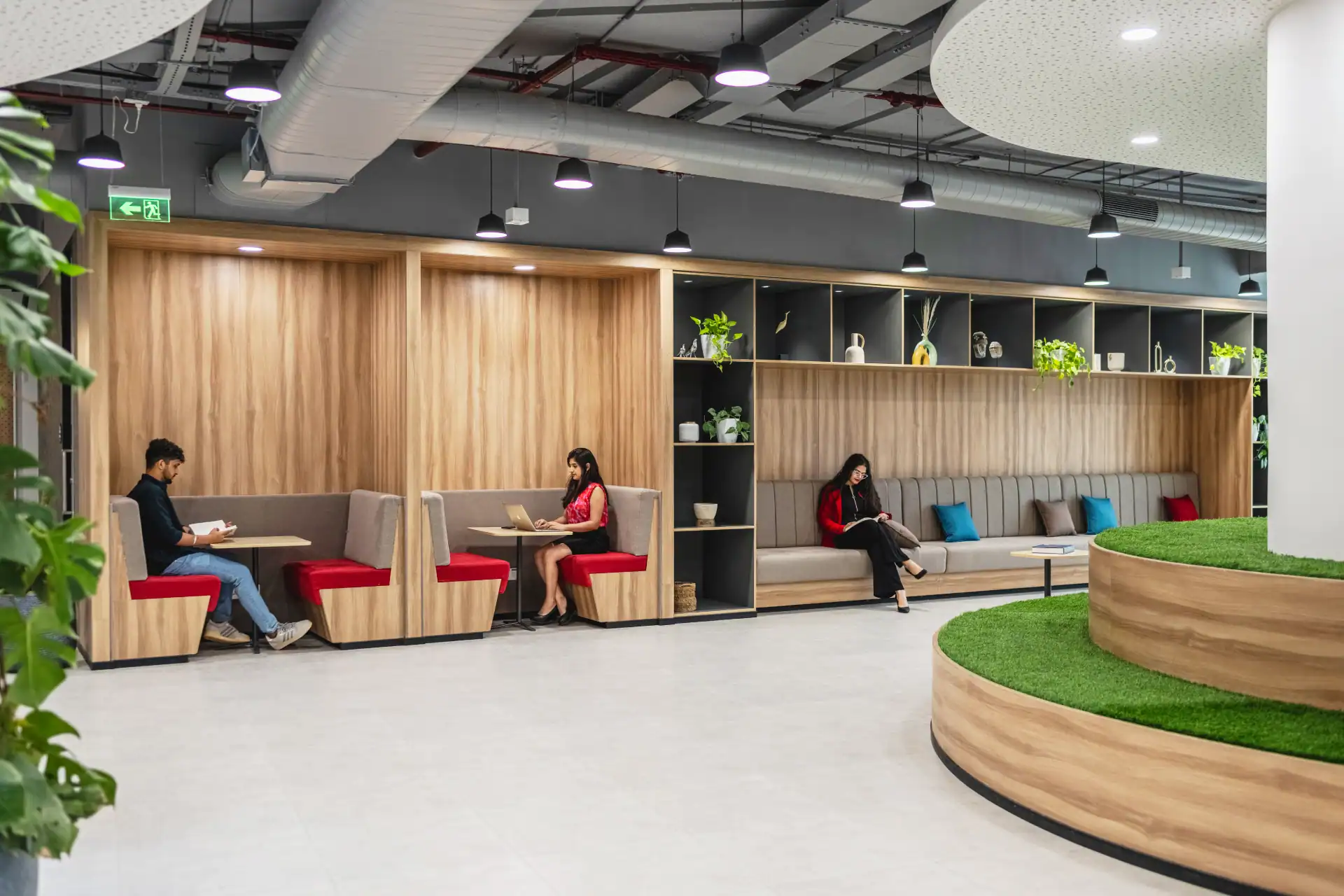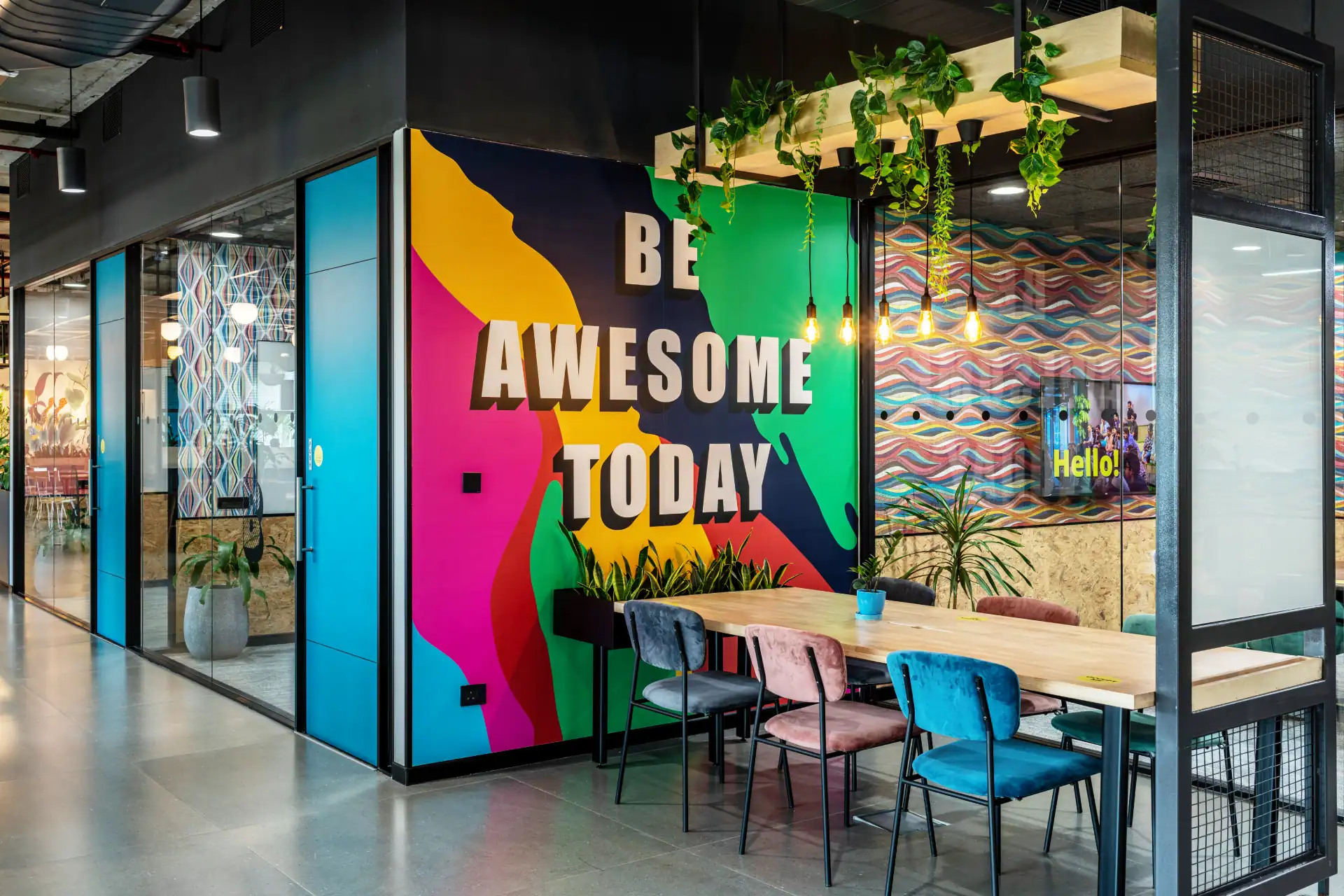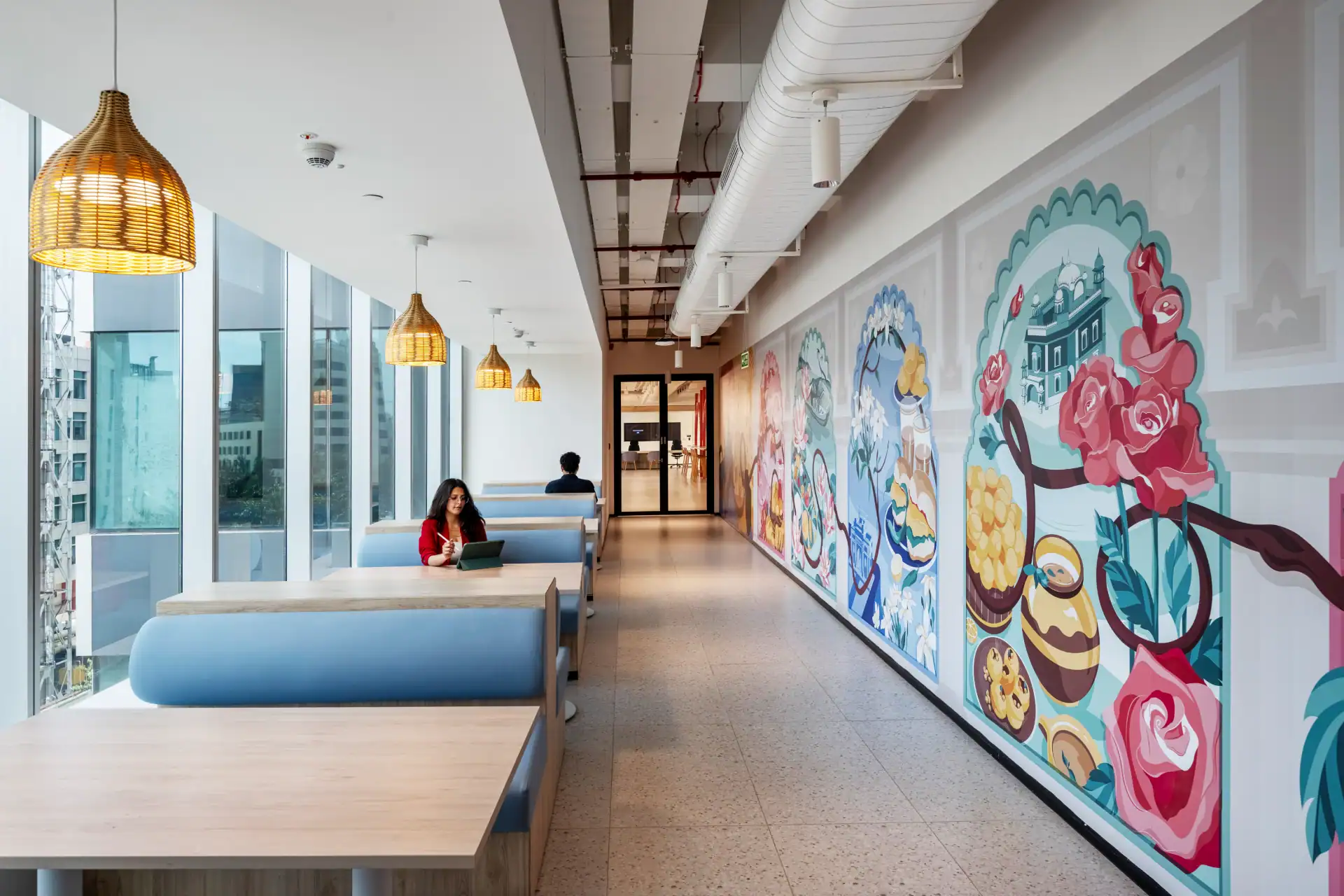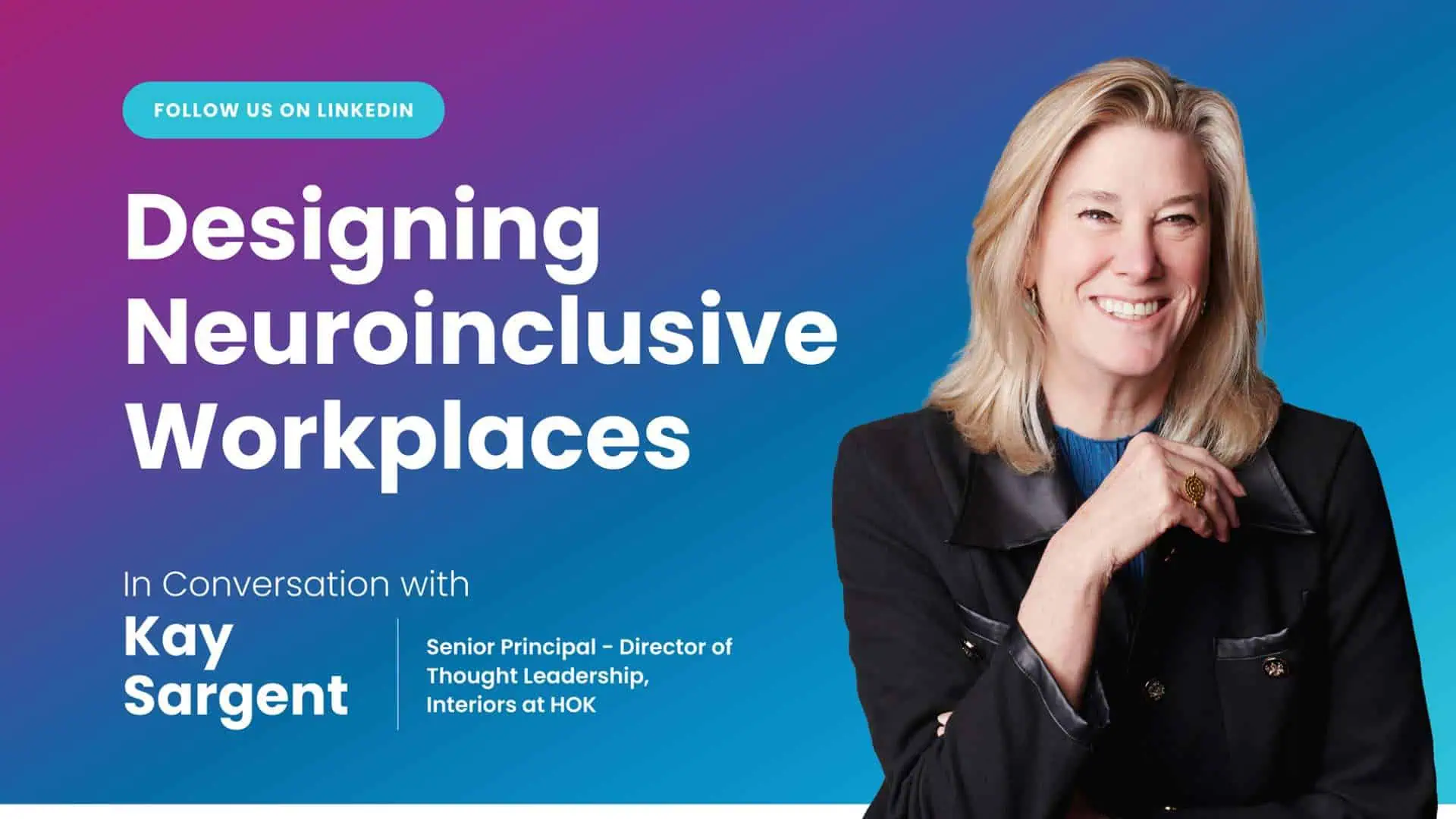As the urban fabric around us continues to grow denser, people are increasingly isolated from the beneficial experience of natural systems and processes. Organizations are now looking for innovative ways to address several interrelated business challenges and iterated employee expectations, leading to the escalated interest in biophilic design to aid in maintaining a healthful and vibrant existence. An extensive body of research shows that the built environment when coupled strategically with biophilia has demonstrated beneficial outcomes with regard to concerning wellbeing and improved productivity while fostering engagement and addressing stresses.
Frederick Law Olmsted once said “…the enjoyment of scenery employs the mind without fatigue and yet exercises it, tranquilizes it and yet enlivens it; and thus, through the influence of the mind over the body, gives the effect of refreshing rest and reinvigoration to the whole system”, aptly reflecting the ethos of biophilic design.
An agglomeration of nature and design
The term ‘biophilia’ was first coined by social psychologist Eric Fromm and later popularized by Edward Wilson who proposed that there was an innate and genetically determined affinity of human beings with the natural world. This desire to affiliate with nature can be harnessed innovatively through biophilic design by creating architecture that is an extension of nature. While biophilic design has gained prominence in recent years for its aesthetically pleasing attribute it has also been documented to be mentally and psychologically beneficial, with a long history and an even bigger future.
Linking nature and health
One’s surrounding environment can impact one or more of three overarching mind-body systems-cognitive, psychological, and physiological.
Cognitive functionality and performance
Cognitive functioning encompasses our mental agility and memory, and our ability to think, learn and output either logically or creatively. Operating in highly stimulating environments and carrying out repetitive routine tasks, such as routine paperwork, reading, and performing calculations or analysis required direct attention which is energy-intensive and over time can result in mental fatigue and depleted cognitive resources (Kellert et al., 2008; van den Berg et al., 2007). Increased routine connection with nature can aid mental restoration and as a result, our capacity to perform focused tasks increases.
Psychological health and well-being
Psychological responses encompass our adaptability, alertness, attention, concentration emotion, and mood. This includes responses to nature that impact restoration and stress management. Studies have reported that experiences in natural environments provide greater emotional restoration, with lower instances of tension, anxiety, anger, fatigue, confusion, and total mood disturbance than in environments devoid of nature. (Alcock et al., 2013; Barton & Pretty, 2010; Hartig et al., 2003; Hartig et al., 1991)
Physiological health and well-being
Physiological responses encompass our aural, musculoskeletal, respiratory, circadian systems, and overall physical comfort. The physiological system needs to be tested regularly, but only enough for the body to remain resilient and adaptive. While connections with nature physiological responses triggered include relaxation of muscles, as well as lowering of diastolic blood pressure and stress hormone levels in the bloodstream. (Park et al., 2009).
The Biophilic design framework
Biophilic design can be organized into three categories as enumerated in 14 patterns of biophilic design framework for understanding and enabling thoughtful incorporation of a rich diversity of strategies into the built environment. – Nature in the Space, natural analogues and nature of the space.
Nature in the space – addresses the direct, physical and ephemeral presence of nature in a space or place. This includes plant life, water and animals, as well as breezes, sounds, scents and other natural elements. The strongest Nature in the Space experiences are achieved through the creation of meaningful, direct connections with these natural elements, particularly through diversity, movement and multi-sensory interactions.
Natural analogues – addresses organic, non-living and indirect evocations of nature. Objects, materials, colors, shapes, sequences and patterns found in nature, manifest as artwork, ornamentation, furniture, décor, and textiles in the built environment. The strongest Natural Analogue experiences are achieved by providing information richness in an organized and sometimes evolving manner.
Nature of the space – addresses spatial configurations in nature. This includes our innate and learned desire to be able to see beyond our immediate surroundings, our fascination with the slightly dangerous or unknown; obscured views and revelatory moments, and sometimes even phobia-inducing properties when they include a trusted element of safety. The strongest Nature of the Space experiences are achieved through the creation of deliberate and engaging spatial configurations commingled with patterns of Nature in the Space and Natural Analogues.
Designs that nurture through nature
Good biophilic design responds to the human need to connect with nature and works to re-establish this contact in the built environment by creating spaces that are inspirational, restorative, and healthy. It draws from influential perspectives – health conditions, socio-cultural norms and expectations, and past experiences while addressing the frequency, duration, and user perception of the experience, without drawing away from the functionality of the space. Today, the need to address wellness at the workplace has become imperative, and by employing these biophilic principles the physical built space can be transformed into a healthy, happy working environment that promotes higher levels of creativity and productivity.

